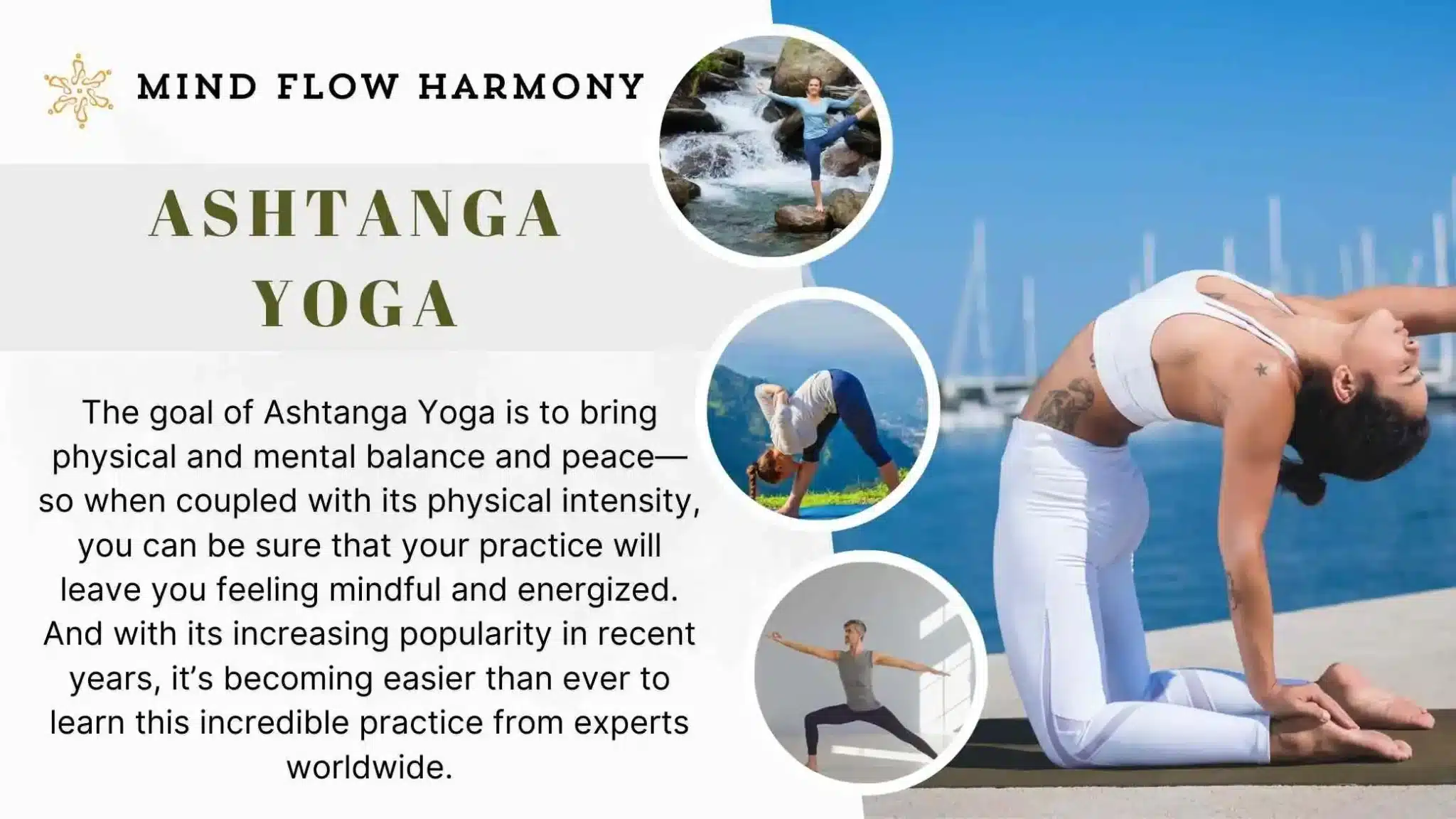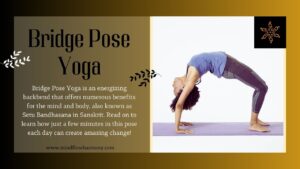Have you ever heard of Ashtanga Yoga? Over the last few years, it’s become one of the most popular forms of yoga amongst yogis and athletic professionals alike. But what is it, exactly?
In this article, we will explore the eight limbs of yoga as outlined in the ancient texts of the Yoga Sutras, providing an overview of what it means to practice Ashtanga Yoga. We’ll discuss how breath and movement synchronization can bring greater balance and focus into your life, as well as how incorporating bandhas and drishti can lead to an even deeper experience on the mat. We’ll also explore the basics of Ashtanga Yoga, looking at its history, philosophy, and why it has captured the hearts and minds of so many people today. Whether you’re brand new to yoga or have been practicing for years, Ashtanga Yoga is certainly something worth exploring.
Table of Contents
What Is Ashtanga Yoga?
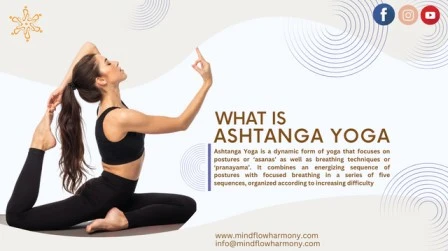
Ashtanga Yoga is a dynamic form of yoga that focuses on postures or ‘asanas’ as well as breathing techniques or ‘pranayama’. It combines an energizing sequence of postures with focused breathing in a series of five sequences, organized according to increasing difficulty.
The goal of Ashtanga Yoga is to bring physical and mental balance and peace—so when coupled with its physical intensity, you can be sure that your practice will leave you feeling mindful and energized. And with its increasing popularity in recent years, it’s becoming easier than ever to learn this incredible practice from experts worldwide.
If you want to learn more about Ashtanga Yoga pose , then you have to join our Yoga Teacher Training Course in Rishikesh
- 100 Hour Yoga Teacher Training in Rishikesh
- 200 Hour Yoga Teacher Training in Rishikesh
- Yin Yoga Teacher Training in Rishikesh
Also Read- 5 Days Holistic Meditation, Yoga Nidra & Mindfulness Retreat
Popularity of Ashtanga in the Present Day
Today, Ashtanga is one of the most widely practiced and popular styles of yoga. Here’s why:
Compatible with any skill level
The beauty of Ashtanga is that it’s incredibly customizable and adaptable. Whether you’re a beginner or a seasoned yogi, you can certainly practice Ashtanga — all you need to do is adjust the intensity and speed according to your own body’s needs.
Proper breathing techniques
Breathing techniques are essential for a successful practice of any yoga style, and Ashtanga is no different! The type of controlled, conscious breathwork (also known as ujjayi breath) used in Ashtanga helps to maximize the effects of each pose, so it’s not only great for your physical health but also for your mental well-being too.
A spiritual journey
Although there’s no religious affiliation associated with Ashtanga, many practitioners feel like they’ve embarked on a spiritual journey when practicing this yoga style. By repeating the same sequence each time you practice, you can gradually build concentration and mindfulness, which can be incredibly therapeutic and calming. Plus, incorporating meditation into your practices also helps with finding inner peace.
Origins and History of Ashtanga Yoga
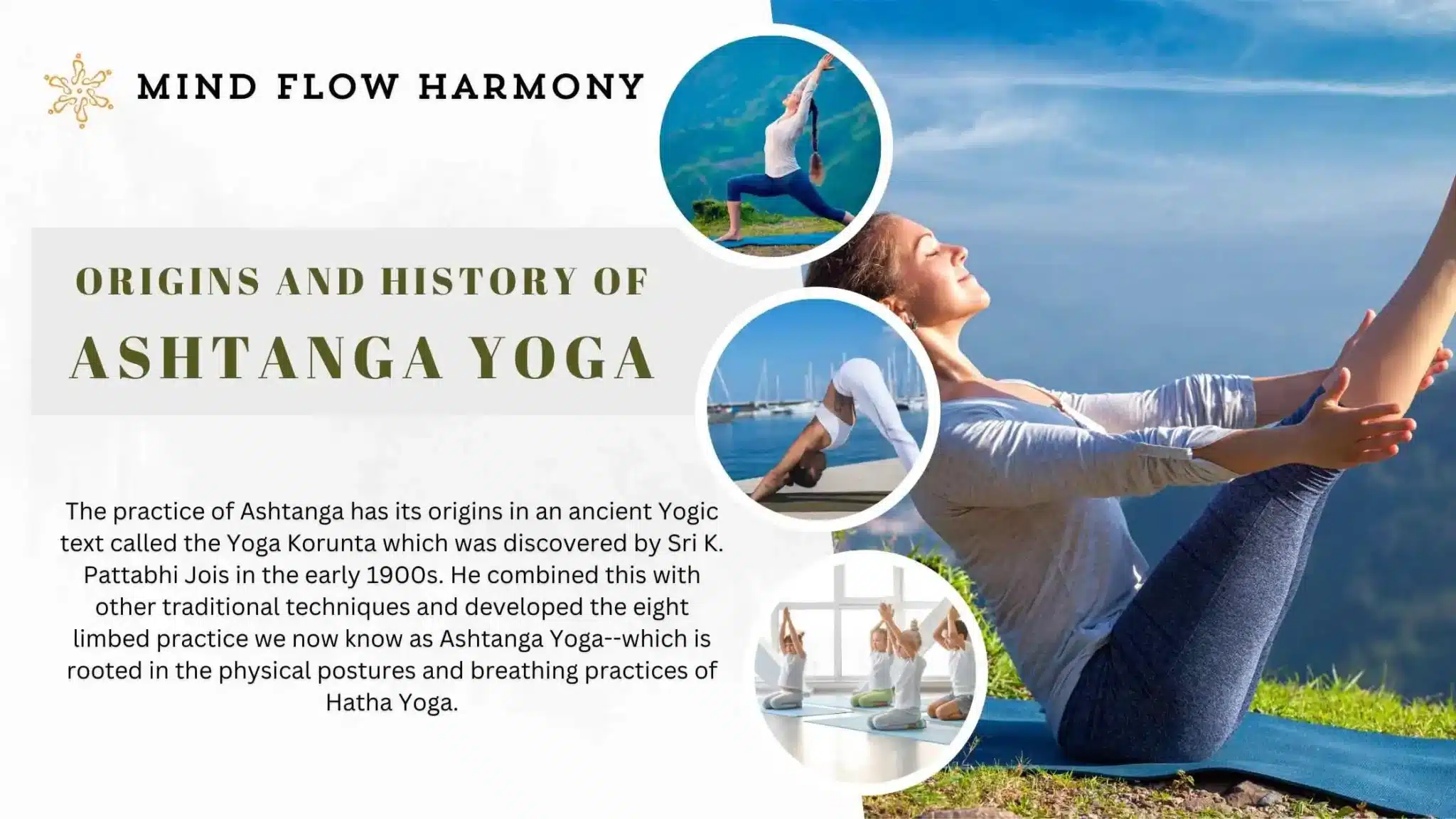
If you’re new to the world of yoga, you may not know a lot about Ashtanga yoga just yet. It’s a more advanced practice that has gained attention as more people explore yoga as a form of movement.
The practice of Ashtanga has its origins in an ancient Yogic text called the Yoga Korunta which was discovered by Sri K. Pattabhi Jois in the early 1900s. He combined this with other traditional techniques and developed the eight limbed practice we now know as Ashtanga Yoga–which is rooted in the physical postures and breathing practices of Hatha Yoga.
This form of yoga involves synchronizing breath with movement, creating an intense and powerful practice that also results in increased mental focus. Another important element of Ashtanga yoga is the use of Ujjayi breathing, which helps to stimulate and regulate your body’s internal heat to help practitioners progress further into their poses.
The popularity and growth of Ashtanga over recent years can be attributed to its ability to provide an energizing yet calming effect on the mind and body that can leave practitioners feeling balanced, invigorated and present after a session on their mat.
Also Read- 7 Days Holistic Meditation, Yoga Nidra & Mindfulness Retreat
Benefits of Practicing Ashtanga Yoga

Are you curious about Ashtanga Yoga and why it’s become so popular? By now you know that Ashtanga yoga is a form of vinyasa yoga, focusing on a set sequence and specific poses. But what are some of the benefits of practicing Ashtanga?
There are lots of reasons why many people love this form and why it’s becoming increasingly popular. Here are just a few:
- Strength and Flexibility: When you practice ashtanga regularly, you’ll discover how quickly your strength and flexibility builds up. Practitioners feel greater body awareness which helps bring into alignment by improving posture, balance, and coordination.
- Mental Benefits: Ashtanga is widely known as an excellent meditation technique for those that are seeking inner peace. The repetitive movements help to focus the mind by centering thoughts on the breath. This noticing-without-judging neuro-linguistic approach helps with self-awareness, building self-confidence, strengthening concentration, deepening focus, enhancing communication skills and lessening anxiety.
- Connecting to Nature: Nature is often used in this practice to evoke strength as well as calming energy. There’s no better way to unplug than being surrounded outdoors in nature while performing yoga poses or sun salutations which can bring a powerful transformation to your physical body as well as connecting you with nature on an even deeper level.
- Ultimately, when done correctly, Ashtanga can offer an individual great mental clarity while providing strength and increased flexibility all the while helping them deepen their connection with nature.
- Boosts Immunity: Ashtanga yoga stimulates the lymphatic system, which helps to eliminate toxins from the body and strengthen the immune system. This can help prevent illness and disease.
- Reduces Stress and Anxiety: Ashtanga yoga is a meditative practice that helps to calm the mind and reduce stress and anxiety. The synchronized breathing helps to focus the mind and reduce racing thoughts.
- Improves Concentration and Focus: The sequence of postures in Ashtanga yoga requires concentration and focus, which can help improve mental clarity and productivity.
- Increases Energy and Vitality: Ashtanga yoga involves deep breathing and intense physical activity, which can increase energy levels and improve overall vitality.
- Promotes Weight Loss: Ashtanga yoga can be a challenging physical practice that burns calories and promotes weight loss.
- Enhances Overall Well-being: Ashtanga yoga is a holistic practice that can enhance overall well-being by improving physical health, mental clarity, and spiritual awareness.
Also Read- 10 Days Holistic Meditation, Yoga Nidra & Mindfulness Retreat
Exploring the Principles of Ashtanga Yoga
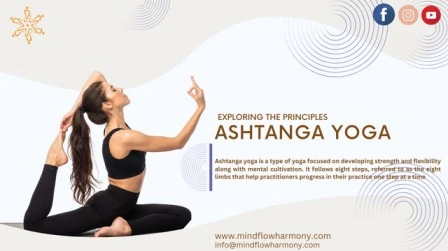
Ashtanga is a mindful practice that connects breath and movement in a flowing sequence. This type of yoga requires the practitioner to use their body and mind in sync. It also incorporates the use of bandhas (energetic locks) that help to further ground one’s awareness in the present moment. Finally, each pose is held with a drishti (intentional gaze) – which helps practitioners concentrate on their inner experience during the practice.
Ashtanga yoga is a type of yoga focused on developing strength and flexibility along with mental cultivation. It follows eight steps, referred to as the eight limbs that help practitioners progress in their practice one step at a time.
The eight limbs of yoga, as articulated by Patanjali in the Yoga Sutras, are the basis of Ashtanga yoga and is a guideline for an ethical and meaningful life. It consists of yama (universal morality), niyama (personal observances), asanas (postures or poses), pranayama (breath work), pratyahara (withdrawal of senses), dharana (concentration), dhyana (meditation) and samadhi (enlightenment).
The first two steps are about establishing the foundation for a successful practice—the Yamas and Niyamas. They are guidelines for ethical behavior, such as nonviolence and contentment, to be observed both on and off the mat. The third step is asana—the physical postures that you’re used to seeing in your local gym classes.
The fourth limb is pranayama, which is controlling and regulating the breath through various breathing exercises that have both physical and mental benefits. The fifth step is pratyahara—learning how to draw your attention inward so that it isn’t pulled away by external stimuli.
The sixth limb is dharana (concentration), seventh limb is dhyana (meditation), and the eighth limb (samadhi) is complete immersion into the practice of yoga for enlightenment. These last three limbs make up Raja Yoga, which takes years of dedication from practitioners before they make it to samadhi.
Synchronizing Breath and Movement
One of the core tenets of Ashtanga yoga is that breath and movement need to be in sync. To get the most out of your practice, each asana should be accompanied by a deep inhalation and an equally long exhalation—this will ensure that your muscles are getting enough oxygen, so you can build strength and maintain poses for longer.
The breath should also be coordinated with the specific movements that make up each asana. For example, if you’re making a half forward bend, inhale as you reach towards the sky and exhale as you fold forward towards the ground. This helps deepen both your concentration and flexibility, and can take your practice to the next level.
It’s important to note that Ashtanga yoga is composed of a series of asanas that are done in quick succession. In order to move from one pose to another, your breath needs to stay fluid throughout. When you breathe deeply and continuously while transitioning between poses, it’s like an invisible thread linking them together—that’s why synchronizing breath and movement is so important!
Also Read- 200 Hour Yoga Teacher Training Course In Rishikesh
The Role of Bandhas (Energetic Locks)
Have you heard of the concept of bandhas? Bandhas are energetic locks within the body, and they play a key role in Ashtanga yoga. There are three main bandhas: mula bandha (root lock), uddiyana bandha (abdominal lock) and jalandhara bandha (neck lock).
When combined with breath and movement synchronization, activating the bandhas make asanas more challenging. They support the body by increasing core strength and reduce strain on your joints.
Mula bandha helps you to draw your energy inward, which can help better control your breathing and build abdominal strength. Uddiyana is a powerful abdominal contraction that helps to protect your spine, improve digestion and energize your body. Jalandhara is an energetic chin lock that helps to balance the elements of fire and water in the body — plus it’s said to have powerful mental benefits that can help you cultivate a sense of calmness.
Gaze and Visualization: Understanding Drishti
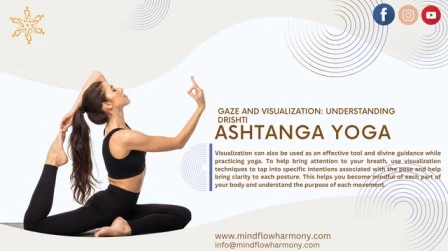
Drishti is a Sanskrit word meaning “gaze” or “vision”, which refers to focusing your attention on a single.
It’s important to note that your gaze — or drishti — also plays a role in Ashtanga yoga. “Drishti” is an important concept in the practice, and it refers to the place where you are meant to focus your gaze while practicing. This can be an external or internal focus – or both. For instance, when practicing, you might look to one fixed point on the ground (an external focus) while also gazing inward into your own heart center or third eye (an internal focus). Different postures have different drishti points and using this technique helps you stay focused on your practice and find a deeper connection with each posture.
Visualization can also be used as an effective tool and divine guidance while practicing yoga. To help bring attention to your breath, use visualization techniques to tap into specific intentions associated with the pose and help bring clarity to each posture. This helps you become mindful of each part of your body and understand the purpose of each movement. By bringing more awareness to yourself and your breathing technique, you’re better able to become one with the poses.
Challenges of Ashtanga Yoga
Ashtanga yoga can be a challenging practice that requires dedication, discipline, and self-compassion. Practitioners may encounter physical and mental challenges, and may need to find ways to balance effort and ease in the practice. With patience and persistence, however, Ashtanga yoga can provide numerous benefits for the mind and body.
- Physical demands: Ashtanga Yoga requires a significant amount of physical strength and endurance. The practice involves a series of challenging poses, including inversions and arm balances that can be difficult for beginners and even experienced practitioners.
- Risk of injury: Because of the physical demands of Ashtanga Yoga, there is an increased risk of injury. Practitioners must be careful to avoid overexertion and maintain proper alignment in each pose to prevent strain and injury.
- Mental focus: Ashtanga Yoga requires a high level of mental focus and concentration. The practice involves moving through a set sequence of poses with synchronized breathing, which can be challenging for those who struggle with mental focus and discipline.
- Time commitment: Ashtanga Yoga is typically practiced for 90 minutes to two hours, which can be a significant time commitment for those with busy schedules.
- Accessibility: Ashtanga Yoga may not be accessible to everyone due to its physical demands and the need for specialized equipment, such as a yoga mat and blocks. Additionally, some people with physical limitations may not be able to perform certain poses in the sequence.
Ashtanga Yoga can be a challenging but rewarding practice for those who are committed to developing strength, flexibility, and mindfulness. However, it is important to approach the practice with caution, respect your body’s limitations, and work with a qualified instructor to ensure safety and proper alignment.
Also Read- Meditation & Yoga Nidra Teacher Training
Features of an Ashtanga Yoga Practice
An Ashtanga Yoga practice is full of features that make it unique and appealing to many practitioners. To start, it’s characterized by its vinyasa-style sequence—meaning you move from one pose to the next with the breath. It also consists of a set series of poses, with each level of difficulty progressively increasing — first you’ll practice the primary series, then intermediate and advanced if you want. This makes it a great choice for someone looking for structured progressions in their yoga practice.
Other cool features include:
- Utilizing bandhas (energy locks)
- Incorporating drishti (focus points)
- Employing ujjayi breath work
- Incorporating meditation and Sanskrit chanting
All this together creates an environment that many find calming and rejuvenating. Plus, the physical intensity can help relieve stress and tension while sculpting your muscles—it’s no wonder why many are taking up this style of yoga!
Our website is listed in healthandbeautylistings.org – Yoga ListingsTips for Getting Started With Ashtanga Yoga
Once you’ve decided to give Ashtanga yoga a whirl, here are some tips for getting started:
Learn the Basics
First, learn the basics in order to gain an understanding of the practice. Knowing the poses and proper execution of them is essential for maximizing your experience and achieving optimal physical benefits. Signing up for classes or watching tutorials online can help you learn the basics of Ashtanga yoga.
Prepare Your Body
To ensure that you don’t injure yourself during your practice, it’s important to warm up beforehand. Stretches and joint rotations will help your body prepare for Ashtanga yoga by loosening tight muscles and increasing blood flow. Warm-up exercises can also help reduce any risk of injury during more advanced poses.
Start Slow
When beginning an Ashtanga yoga practice, it can be tempting to dive straight into more complex postures – but make sure to take things slow. Begin by focusing on basic poses that work towards a flow sequence, rather than trying to jump right into more difficult asanas. Starting with simpler postures allows your body to get used to the movements while building strength that you need before advancing further in your practice.
By learning the basics, preparing your body and starting slowly, you’ll be well on your way towards mastering Ashtanga yoga – and who knows? Maybe you’ll even be able to do those Instagram-worthy headstands before long!
Also Read- 100-Hour Anatomy and Therapy Teacher Training in Rishikesh
Conclusion
Ashtanga yoga provides a holistic approach to wellness and self-exploration. It encourages us to explore our physical and mental boundaries, develop a strong sense of self-awareness, and connect with our true self. Ashtanga yoga is a ritualistic practice that, through breath and movement, allows us to experience heightened physical and mental awareness. Through a practice of Ashtanga yoga, we can find balance and harmony between our mind, body, and soul.
Overall, Ashtanga Yoga is a rigorous and powerful practice that can help you achieve a range of physical and mental benefits. It’s a fast-paced style that builds strength, flexibility, and a greater sense of balance, while helping you find inner peace. Ashtanga Yoga is growing in popularity due to its challenging and dynamic structure, which can bring an invigorating spark to your practice.
The practice is steeped in tradition, but it’s also open to new interpretations. Whether you’re a complete beginner or a seasoned yogi, Ashtanga can give you a rewarding and fulfilling experience.

